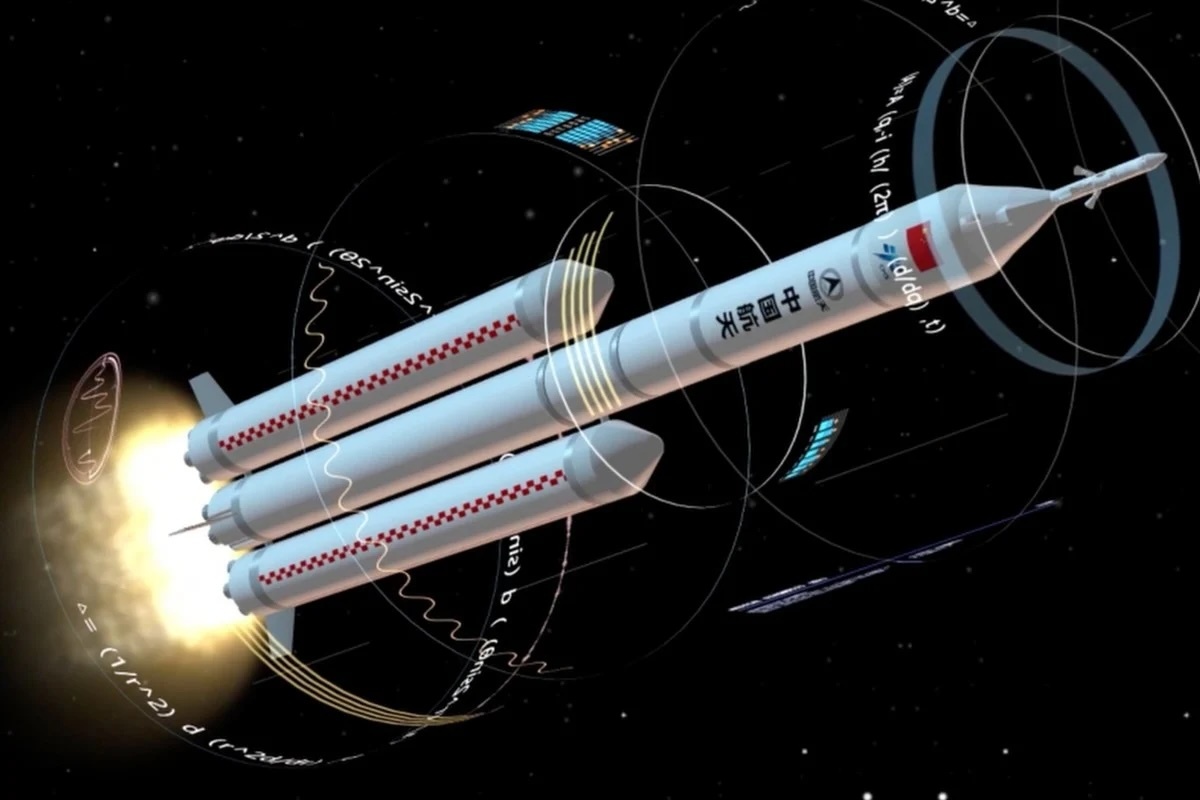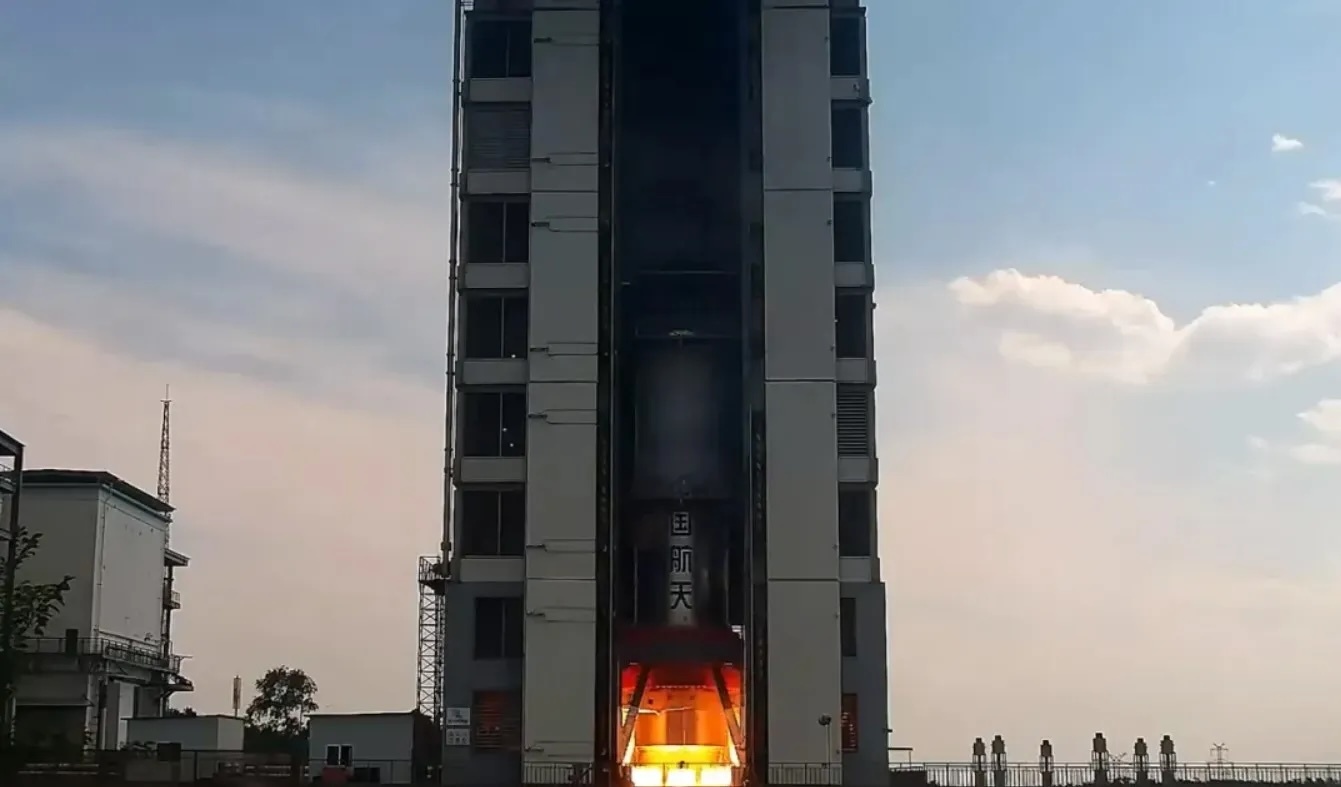16.06.2024

Long March 10
China on Friday completed a test run of the propulsion system for the first stage of the Long March-10 carrier rocket, the China Academy of Launch Vehicle Technology (CALVT), its developer, has announced.
The Long March-10 carrier rocket is a three-and-a-half-stage rocket, developed for China's manned lunar mission that will launch new-generation manned spacecraft and lunar landers. It has an approximate length of 92.5 meters, a lift-off weight of some 2,189 tonnes, a lift-off thrust of about 2,678 tonnes, and a payload capacity for travel to an Earth-moon transfer orbit of no less than 27 tonnes.
Another rocket, a derivative of the Long-March-10 carrier rocket, does not have boosters and is capable of sending astronauts and cargo to China's space station, according to its developer, which operates under the China Aerospace Science and Technology Corporation.
The non-booster rocket has a length of about 67 meters, a lift-off weight near 740 tonnes, a lift-off thrust of approximately 892 tonnes, and a payload capacity for transfer to a near-Earth orbit of no less than 14 tonnes.
During Friday's test, the propulsion system's engine started normally, operated stably and shut down on schedule, and all parameters tested were normal, CALVT said.
The propulsion system test is the most complicated and difficult ground test undertaken during the development of carrier rockets.
Friday's test was the largest propulsion system test that has been carried out to date in China's launch vehicle development, with three YF-100K engines ignited simultaneously and ground thrust reaching 382 tonnes.
Its completion means the Long March-10 carrier rocket has entered the fast track in its large-scale ground testing and development, CALVT said.
According to a subsequent development plan, the second first-stage propulsion system test for the Long March-10 carrier rocket will be carried out soon to verify other operating conditions.
Quelle: Xinhua
----
Update: 18.06.2024
.
China takes small step towards the moon with rocket test

A static fire test of a Long March 10 first stage test article in Beijing, June 14, 2024. Credit: CASC
HELSINKI — China’s main space contractor has carried out a successful static fire test of a rocket first stage designed to take astronauts to the moon.
A Long March 10 first stage test article was fired in Fengtai district of Beijing, Friday, June 14. The stage started normally, operated steadily, and shut down on schedule, the China Academy of Launch Vehicle Technology (CALT) stated via its WeChat channel.
The test was conducted by the Institute 101 of the Sixth Academy of the China Aerospace Science and Technology Corporation (CASC), the country’s main space contractor.
The successful test is a step towards China’s goal of putting astronauts on the moon before 2030. NASA currently aims to land humans on the moon once more with Artemis III no earlier than 2026.
The test article had three YF-100K kerosene-liquid oxygen engines installed across its 5.0-meter diameter. The full Long March 10 first stage will be powered by seven such engines. The rocket’s center stage will have two similar stages attached to it.
The engines may have been limited to three due to the capacity of the test stand. The static fire was however deemed a complete success, with simultaneous firing of the three engines.
“The test is basically a comprehensive verification of our first-stage,” Xu Hongping, an engineer with CASC, told CCTV. “It was a complete success, laying a solid foundation for our subsequent research and development and the realization of our entire manned lunar exploration program,”
The test also verified use of common bulkheads, allowing the rocket to be lighter, the propellant filling process, the electrostatic servo mechanism and other aspects of the rocket.
A second first-stage power system test will be carried out again in the near future to further verify other working conditions, China’s human spaceflight agency, CMSEO, stated, according to A subsequent development plan for the Long March 10.
The Long March 10 will consist of three stages with a total length of 92.5 meters. The first stage will use three cores. It will have a mass of 2,189 tons at takeoff and a takeoff thrust of about 2,678 tons. It is designed to carry no less than 27 tons to Earth-moon transfer orbit.
Two Long March 10 launches will be used to get astronauts to the moon and back. One will launch the Mengzhou crew spacecraft and another the Lanyue lunar lander. These will rendezvous in lunar orbit. Two astronauts descend to the surface in the lander. They will spend six hours on the lunar surface before rejoining their colleague in lunar orbit and returning to Earth.
“The development of new-generation crewed rockets can greatly enhance our country’s ability to enter space and help the Chinese land on the moon. In addition, some of its technological breakthroughs can drive the development of our entire aerospace industry and will be a considerable boost to the country’s advanced manufacturing sector,” Xu said.
A low Earth orbit Long March 10 variant will be used to send crew and cargo to the Tiangong space station. The variant will be 67 meters long and have a reusable first stage. It will have a mass of 740 tons at liftoff, generating about 892 tons of thrust. The capacity to LEO is to be no less than 14 tons.
Xu said the reusable first stage design has been verified at scale. The first stage will use retropropulsion and be caught by tightwires, rather than deploying landing legs.
The YF-100K variable thrust engines are uprated versions of YF-100 engines that power China’s new-generation kerosene rockets that began entering service just under a decade ago.
New launch facilities for the Long March 10 are already being constructed at Wenchang Satellite Launch Center on Hainan island.
The crewed lunar landing mission is part of China’s wider plans to establish a robotic and eventually inhabited moon base. The initiative is known as the International Lunar Research Station (ILRS).
China last week selected a new batch of astronauts and is beginning training for future lunar missions.
Quelle: SN
